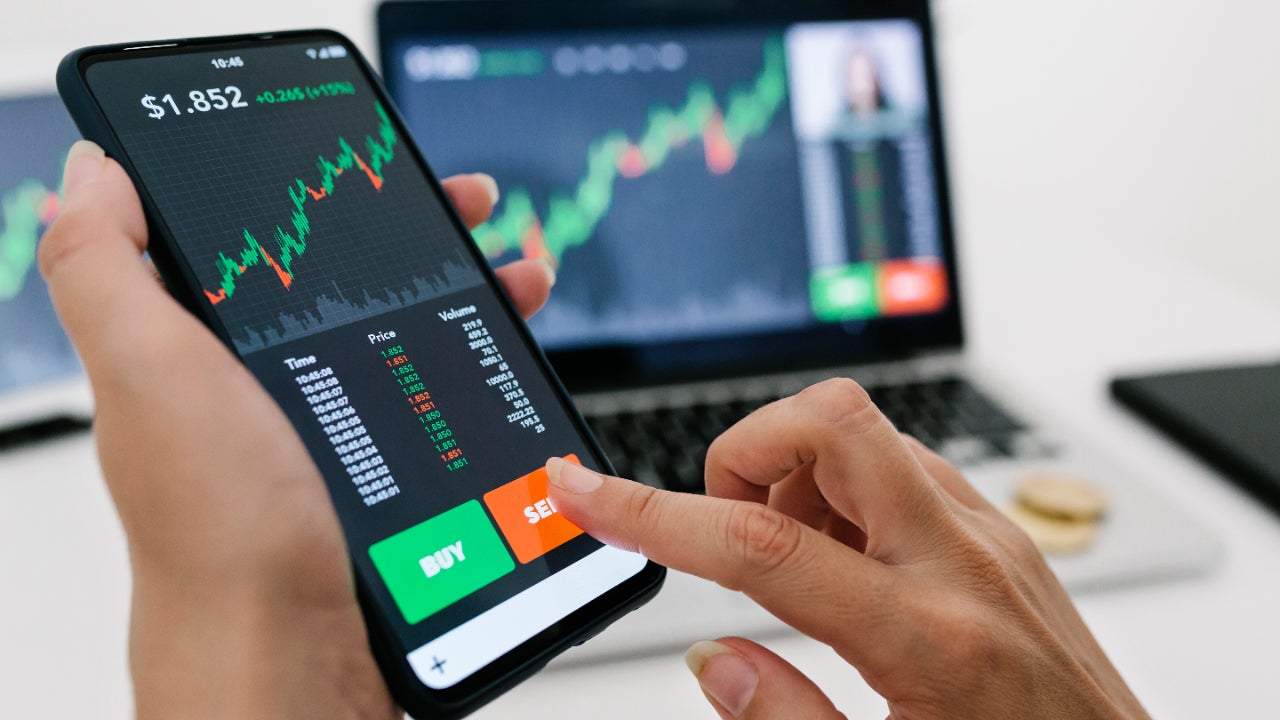Biggest consumer fintech trends to watch in 2024

Fintech is changing the way we bank year by year, be it with digital payments, virtual assistance or more consumer-friendly alternatives to traditional banking.
The term “fintech” stands for financial technology. Broadly, it captures the array of technology used in banking and financial services. It also refers to the firms that develop this technology to compete with traditional banks.
Fintech is a huge part of life for consumers across the country — and its adoption is in part driven by economic reasons. According to financial services provider Plaid, 56 percent of consumers say they’re reliant on digital financial tools due to economic factors. Furthermore, 84 percent of consumers surveyed say fintech has helped them manage their finances.
While tools such as digital payments and multi-factor authentication have been around for years, new technology is being developed continuously. Here are some of the newest fintech trends that are bringing convenience and protection to consumers.
Key takeaways
- Generative AI is being integrated into personal finance, providing more personalized and interactive services for users.
- Real-time payment services and cross-border payment solutions are becoming more accessible and affordable for consumers.
- Digital wallets are growing in popularity and could potentially become the primary form of payment in the future.
With Mint gone, new budgeting apps are emerging
In October 2023, Intuit announced that it would be shutting down Mint, one of the most popular and comprehensive budgeting apps. Since then, numerous new finance apps have materialized with unique digital offerings in an attempt to replace, and even outshine, Mint.
Piere, for example, debuted at the end of 2023, highlighting in a press release that it would allow users to “create a budget in just two taps.” It also comes with a distinctive feature to target the Mint user base — on the app’s account connection page, users can use an import link to move all of their data from Mint into Piere (rather than start a budget from scratch).
Another app, Monarch Money, markets itself as “the best Mint alternative,” and, as of this writing, is offering a 50 percent discount on a year-long subscription for migrating Mint users. One of Monarch’s hallmarks is that it allows users to vote on what features they’d like to see in the app, giving personal finance a new, democratic angle.
It’s still early to say whether either of these apps — or another potential competitor — will rise to the popularity of Mint, but the race to become the household budgeting app is no doubt driving new, innovative features in personal finance technology.
What’s the promise: Personal finance apps are developing new solutions to budgeting, including simplifying the budget-making process and giving users more decision power.
What to watch out for: Countless budgeting apps are available on the app stores, with more emerging every day. The significant range of options can lead to “choice overload,” and lead to some of the best options getting overlooked or simply unable to stay afloat.
Your finance app will converse with you through generative AI
Artificial intelligence (AI) is nothing new in finance — banks have been using it for years for such applications as identifying fraud and providing automated assistance to customers. Now, generative AI can take AI implementation even further, by producing brand-new content automatically.
The advantage of generative AI lies in its ability to make content, rather than simply analyze or streamline data. You might be familiar with ChatGPT, for example, a type of generative AI tool that can have a conversation with you.
There are a number of ways generative AI could be used in fintech. It can provide personalized financial advice, create documents such as loan agreements and generate predictive analyses. According to market researcher Mordor Intelligence, AI in the fintech market is valued at $44.08 billion and predicted to grow to $50.87 billion by 2029.
Cleo, for example, is a personal finance app that uses generative AI to offer conversational advice to users. It can answer questions such as how much you should spend on certain categories to meet savings goals. The personalized, interactive format of Cleo goes to show how generative AI can make finance more consumer friendly.
What’s the promise: Generative AI technology will be integrated more widely into personal finance to provide personalized, secure services.
What to watch out for: AI is susceptible to errors, or “hallucinations” – nonsensical, misleading information generated by an AI based on inputs. If the technology proves to be error-prone, it could put consumers at risk and make its use unreliable.
You’ll get paid in real time
In July 2023, the Federal Reserve launched FedNow, a real-time payment service that financial institutions could sign up for to allow their customers to receive instant payments. While some services like Zelle have allowed consumers to send and receive money to one another instantly, FedNow expands payment capabilities by allowing for instant payments between businesses and consumers as well, through government-supported means.
Some scenarios outlined by the Fed for how real-time payments can help consumers include:
- Instant access to paychecks (rather than having to wait several days for processing)
- Last-minute bill payments to avoid a late fee
- Large-dollar wire transfers
Many banks have already signed up for FedNow, but some of the largest players have yet to do so. But as more banks adopt the service, more consumers will be able to both access their money faster and get payments in on time, potentially curtailing costly fees.
What’s the promise: FedNow, a real-time payment service, will become more widely adopted by banks and ensure fast payments, including instant paycheck deposits.
What to watch out for: As with other payment services, there’s a risk for FedNow to be taken advantage of by fraudsters. Non-credit payments aren’t regulated by the Fair Credit Billing Act and can be more difficult to dispute or get refunded.
It will be easier to manage money across borders
Cross-border payments are on the rise and expected to increase by 5 percent each year until 2027, according to J.P. Morgan.
While multicurrency accounts — bank accounts that hold funds in different currencies — have been around for a while, they can be expensive, or simply not very accessible. Plus, international services, such as wire transfers, can be slow and come with high fees. Fintech is making it easier to manage money in multiple currencies.
Some services, such as Wise, are already in place to facilitate cross-border payments for individuals. But transfers with Wise can still be slow and costly. Nium is a fintech that’s developing real-time payments for cross-border transactions. In other words, it could provide consumers with an option to send money across the world almost instantly.
Meanwhile, new personal finance apps are emerging that allow for some commonly known budgeting and savings tools — such as tracking spending — in multiple currencies. Wally, for example, is a budgeting app that allows users to link bank accounts from 70 different countries.
What’s the promise: Fintechs are making it easier and less expensive to send, receive and manage money across different currencies.
What to watch out for: Even as some services make cross-border payments more accessible, it’s important to watch out for fees charged for faster transfers, higher amounts or for transacting between certain countries.
Digital wallets are shifting from the alternative to the norm
Digital wallets, such as PayPal and Apple Pay, allow consumers to make payments electronically without needing a physical card or wallet. They’ve steadily grown to become one of the most common forms of payment — according to a November 2023 report from Banked, about 60 percent of respondents had used a digital wallet in the past month.
Furthermore, market researchers see digital wallet transactions growing significantly, with a recent report predicting the total value of digital wallet transactions to grow 77 percent by 2028, to $16 trillion worldwide.
Does that mean more traditional payment methods, such as physical cards and cash, will be abolished in 2024? Likely not. But the growth of digital wallets indicates a changing payment landscape. With more consumers relying on digital wallets, more retailers, in turn, will accept digital wallet payments — and even stop accepting cash.
Most digital wallet offerings are third-party apps that allow you to link external bank accounts and cards as payment methods. Some, however, are more comprehensive. PayPal, for example, offers its own debit card. In the future, there’s a possibility that digital wallets will become more like bank accounts — or that bank accounts will offer more of the functions of digital wallets.
What’s the promise: Digital wallets will be more widely accepted and used for payments, both in-store and online.
What to watch out for: Because digital wallets are connected to your phone, they are potentially vulnerable to hackers. If a hacker gets access to your phone, they could get into your digital wallet, too, without the right security measures in place.
Trends that are no longer relevant in fintech
While fintech continues to expand its innovations and provide unique solutions, there are two trends that have waned:
- Cryptocurrency exchanges: Numerous cryptocurrency exchanges have gone bankrupt in the past couple of years, including the disastrous downfall of FTX. These failures have shown that a lack of regulation when it comes to crypto has posed risks to cryptocurrency exchanges.
- COVID-driven interest in fintech: During the COVID-19 pandemic, fintech funding peaked. Nearly $40 billion was invested in fintech in the fourth quarter of 2021, according to CB Insights. That amount has steadily been decreasing, and S&P found that venture capital flows into fintech, in particular, dropped by 36 percent in the third quarter of 2023 from the year before.
Bottom line
Every year, new technology emerges that changes the norms for banking and finance. Concepts such as an app that lets you send money to friends or a digital wallet in your mobile phone would have been unheard of decades ago. We often take these developments for granted, but the role they play in our day-to-day activities is critical.
With that said, new technologies, like their makers, aren’t perfect. It often takes years to fine-tune their capabilities. While it makes sense to be somewhat wary of these innovations, as with any change, it’s worth looking into how they could add ease, bolster your checking and savings accounts and enhance security for your finances in the long run.






